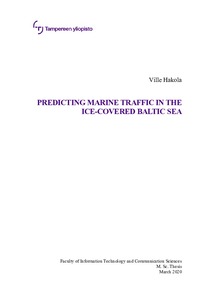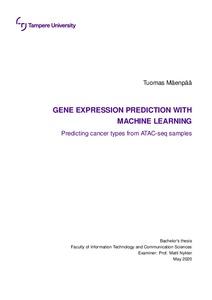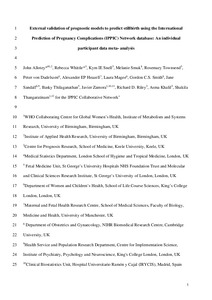Predicting Marine Traffic in the Ice-Covered Baltic Sea
Hakola, Ville (2020)
Hakola, Ville
2020
Tietojenkäsittelyopin maisteriohjelma - Master's Programme in Computer Science
Informaatioteknologian ja viestinnän tiedekunta - Faculty of Information Technology and Communication Sciences
This publication is copyrighted. You may download, display and print it for Your own personal use. Commercial use is prohibited.
Hyväksymispäivämäärä
2020-04-06
Julkaisun pysyvä osoite on
https://urn.fi/URN:NBN:fi:tuni-202003262892
https://urn.fi/URN:NBN:fi:tuni-202003262892
Tiivistelmä
Icebreaking activity and seasonal ice propose challenges for marine traffic prediction in the Baltic Sea. Traffic prediction is a vital part in the planning of icebreaking activities, but it remains largely as a manual task. The aim of this thesis is to examine factors influencing marine traffic modelling in ice-covered waters and propose a novel A*-based method for modelling traffic in ice. The current state of the marine traffic modelling and factors affecting vessel movement are concluded by examining the literature and historical vessel tracks.
The field of traffic modelling research is growing rapidly. Currently the biggest challenges are evaluation of results and the lack of publicly available datasets. Moreover, the current approaches to model vessel movement in ice are promising but fail to capture how icebreaking activity influences vessel routes.
The proposed model consists of sea, maneuverability, route and speed modelling. The model uses historical AIS data, topography of the sea, vessel type and dirways as main data inputs. The model is trained with summer tracks and dirways are used for modelling the ice channels kept open by icebreakers. The accuracy of the model is evaluated by examining route, speed, traffic and ETA (estimated time of arrival) prediction results separately. Moreover, the area between the actual and predicted route is introduced as an accuracy measure for route prediction.
The model shows that winter route prediction can be improved by incorporating dirways to the modelling. However, the use of dirways did not affect the speed, traffic or ETA prediction accuracy. Finally, the datasets and source code used in this thesis are published online.
The field of traffic modelling research is growing rapidly. Currently the biggest challenges are evaluation of results and the lack of publicly available datasets. Moreover, the current approaches to model vessel movement in ice are promising but fail to capture how icebreaking activity influences vessel routes.
The proposed model consists of sea, maneuverability, route and speed modelling. The model uses historical AIS data, topography of the sea, vessel type and dirways as main data inputs. The model is trained with summer tracks and dirways are used for modelling the ice channels kept open by icebreakers. The accuracy of the model is evaluated by examining route, speed, traffic and ETA (estimated time of arrival) prediction results separately. Moreover, the area between the actual and predicted route is introduced as an accuracy measure for route prediction.
The model shows that winter route prediction can be improved by incorporating dirways to the modelling. However, the use of dirways did not affect the speed, traffic or ETA prediction accuracy. Finally, the datasets and source code used in this thesis are published online.
Kokoelmat
Samankaltainen aineisto
Näytetään aineisto, joilla on samankaltaisia nimekkeitä, tekijöitä tai asiasanoja.
-
Machine Learning Models For Predicting Online Store Purchases - Case: Google Analytics Customer Revenue Prediction
Jalonen, Mika Sakari (2019)
Kandidaatintyö -
Gene expression prediction with machine learning; Predicting cancer types from ATAC-seq samples
Mäenpää, Tuomas (2020)
Kandidaatintyö -
External validation of prognostic models to predict stillbirth using the International Prediction of Pregnancy Complications (IPPIC) Network database : an individual participant data meta-analysis
IPPIC Collaborative Network; Allotey, J; Whittle, R; Snell, K I E; Smuk, M; Townsend, R; von Dadelszen, P; Heazell, A E P; Magee, L; Smith, G C S; Sandall, J; Thilaganathan, B; Zamora, J; Riley, R D; Khalil, A; Thangaratinam, S; Laivuori, Hannele (18.08.2021)
articleOBJECTIVE: Stillbirth is a potentially preventable complication of pregnancy. Identifying women at risk can guide decisions on closer surveillance or timing of birth to prevent fetal death. Prognostic models have been ...


